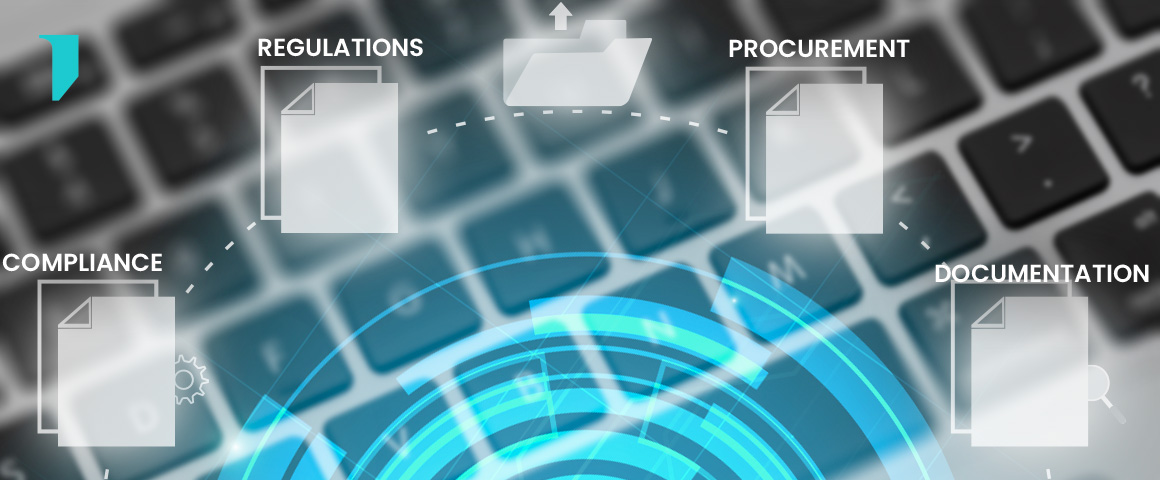Ever tried to explain your job in life sciences compliance to someone at a dinner party? You might as well be speaking another language, right? It’s like trying to teach chess to someone who’s only played checkers – the board looks similar, but the rules are completely different. And when it comes to GxP compliance in life sciences, those rules are absolutely critical to keeping products safe and companies out of hot water with regulators.
Digital transformation has really made it easier to implement and maintain compliant processes across all kinds of industry settings—from pharmaceuticals and biotech to medical devices and healthcare. With comprehensive audit trails, secure integrations, and repeatable processes, CLM solutions can be your allies in maintaining compliance across manufacturing operations, clinical trials, medical device development, and other regulated activities.
Rather than prescribing a one-size-fits-all approach, the best solutions recognize that each organization interprets regulatory requirements differently based on its specific risk profile and operational context. The most effective compliance technologies adapt to support these distinct interpretations while providing the necessary infrastructure for consistent documentation and process control.
Understanding GxP
What is GxP?
You’ve probably heard the term “GxP” thrown around in meetings, but what does it actually mean? The GxP meaning boils down to a collection of quality guidelines and regulations designed to ensure products are safe, meet their intended purpose, and have been produced according to quality processes with proper documentation.
Breaking it down: the “G” stands for “Good,” while the “P” refers to the specific practice—manufacturing, laboratory work, clinical research, or distribution.
Unlike a single standard or framework, what is GxP really covers an umbrella of specialized frameworks that apply to different regulated activities:
- Good Manufacturing Practice (GMP): Focuses on consistent manufacturing processes and quality control
- Good Laboratory Practice (GLP): Guides non-clinical safety studies and data integrity
- Good Clinical Practice (GCP): Establishes ethical and scientific quality standards for clinical trials
- Good Distribution Practice (GDP): Covers the proper distribution of medicinal products
What unites these diverse frameworks is their shared emphasis on documentation, traceability, security, and data integrity. In a GxP environment, nothing happens without appropriate documentation: every action must be recorded, verified, and available for inspection.
Even when contracts don’t directly manage patient data or manufacturing specifications, the agreement processes still require the same level of control and documentation that defines GxP processes. Knowing what is GxP environment is fundamental—it refers to the controlled operational context in which regulated activities take place, encompassing systems, personnel, facilities, and documented procedures that collectively ensure compliance with quality standards.
Historical Context
The journey of GxP documentation has followed the same path as most technological shifts in business. Back in the day, regulatory compliance meant mountains of hand-signed paper records, manual verification steps, and rooms full of file cabinets. Sure, it worked—sort of—but it created enormous administrative headaches and slowed down regulated businesses considerably.
The introduction of Title 21 CFR Part 11 in 1997 was a decisive step, as it established criteria according to which electronic records and signatures could be considered trustworthy, reliable, and equivalent to paper documents. This legal framework laid the foundation for digital transformation in regulated industries, even though adoption was slow for many years.
The rise of Software-as-a-Service (SaaS) solutions over the past decade has further accelerated this evolution. Cloud-based applications introduced new validation models specifically designed for continuous delivery environments that maintain compliance while enabling more rapid innovation.
Modern validation approaches focus on risk assessment, intended use, and system boundaries rather than the exhaustive documentation of every function. This made it possible for solutions with strong security controls and SOC 2 certifications to support 21 CFR Part 11 compliance effectively, even in cloud environments.
GxP in Different Industry Contexts
So, how does this all play out in the real world? Understanding how GxP regulations show up across different sectors helps clarify where contract management fits into the compliance picture. While each GxP industry context has its own unique documentation needs, the underlying principles stay remarkably consistent.
GxP vs GMP
GMP focuses specifically on manufacturing controls, while GxP encompasses broader quality practices across various domains, including clinical, laboratory, and distribution processes.
In pharmaceutical manufacturing, GMP guidelines focus on production consistency, equipment validation, and material traceability. For clinical research, GCP emphasizes protecting human subjects, maintaining study integrity, and ensuring data accuracy. Laboratory operations under GLP require careful documentation of testing methods and results.
Contract lifecycle management platforms like Malbek don’t replace the core systems that manage these specialized functions. Instead, they provide adjacent support by ensuring that agreements governing these activities maintain the same level of documentation rigor and process control. While Malbek doesn’t manage GxP manufacturing operations directly, it ensures that contracts governing those operations maintain compliance with documentation requirements.
For contract professionals, this means focusing on how your CLM system supports documentation integrity, approval workflows, and audit trails rather than industry-specific manufacturing or laboratory requirements.
GxP Regulations and Documentation
Overview of GxP Regulations
Let’s dig into the regulatory frameworks that make all this happen. The rules governing electronic records in GxP compliance vary depending on where you operate, but they’re all working toward the same goals. In the United States, Title 21 CFR Part 11 lays out the FDA’s requirements for electronic records and signatures, essentially defining when your digital documentation can stand in for traditional paper. Over in the European Union, Annex 11 of EudraLex does similar work, though with some distinct requirements unique to that region.
These regulations ensure that digital documentation remains trustworthy, reliable, and audit-ready throughout its lifecycle. Key provisions typically include:
- System validation to ensure accuracy, reliability, and consistent intended performance
- Ability to generate accurate and complete copies of records
- Protection of records to enable accurate retrieval throughout retention periods
- Limiting system access to authorized individuals
- Secure, computer-generated, time-stamped audit trails
- Use of operational system checks and authority checks
- Validation of systems managing electronic signatures
For contract management platforms, integration with compliant electronic signature solutions like DocuSign and Adobe Sign helps ensure that executed agreements meet 21 CFR Part 11 requirements. These integrations must maintain appropriate controls around identity verification, signature binding, and non-repudiation of signed documents.
Role of ALCOA Principles
If GxP had a foundation, it would be built on ALCOA. At the heart of any GxP data integrity approach are the ALCOA principles—Attributable, Legible, Contemporaneous, Original, and Accurate. These principles, later expanded to ALCOA+ (adding Complete, Consistent, Enduring, and Available), provide a framework for evaluating whether documentation practices meet regulatory expectations. Understanding what is GxP data helps clarify these requirements—it refers to any information created, stored, or processed within a regulated system that must maintain integrity, security, and traceability throughout its lifecycle.
- Attributable: All data must be traceable to the individual who created it, modified it, or performed the recorded action
- Legible: Information must be readable and permanent
- Contemporaneous: Events must be documented at the time they occur
- Original: Source data should be preserved or a verified true copy maintained
- Accurate: Data must be correct, truthful, and free from errors
In contract lifecycle management, these principles translate into specific system capabilities:
- Attributable: Detailed user activity logging that captures who performed each action
- Legible: Human-readable contract formats with clear versioning
- Contemporaneous: Real-time tracking of edits, approvals, and signature events
- Original: Secure repository of original agreements with tamper-evident audit trails
- Accurate: Validation controls that ensure data consistency
The extended ALCOA+ principles further emphasize:
- Complete: Full documentation of all relevant activities
- Consistent: Data should be reliable and uniform across the entire process
- Enduring: Records must be preserved and accessible throughout retention periods
- Available: Data must be accessible for review and audit upon demand
GxP Compliance in a Digital Environment
Digital Transformation in GxP Compliance
How has technology changed the compliance landscape? The digital transformation of GxP processes has completely revolutionized how life sciences organizations tackle compliance challenges. Cloud-based platforms have introduced tremendous scalability and standardization opportunities, making it possible for enterprises to maintain consistent compliance controls wherever they operate around the globe.
For contract management, digital solutions address several traditional compliance challenges:
- Ensuring consistent processes across departments and regions
- Maintaining complete audit trails of all contract-related activities
- Securely storing and retrieving documents throughout retention periods
- Enforcing appropriate approvals and signature controls
- Providing evidence of system validation for auditors
Malbek supports these requirements through purpose-built features that align with regulatory expectations. Particularly valuable is the ability to establish repeatable, validated processes that scale across business units while maintaining consistent compliance controls. This standardization reduces variation in compliance approaches—a common source of regulatory findings.
Security controls implemented in compliance with SOC 2 audits provide many of the technical safeguards required for GxP compliance cloud solutions, including access controls, disaster recovery, backup procedures, and change management processes. When combined with system validation documentation, these controls create a robust foundation for maintaining compliance in cloud environments.
A key advantage of digital systems is their ability to automate compliance documentation. Rather than requiring manual logging of activities, modern CLM platforms generate detailed audit trails automatically, capturing user actions, timestamps, and before/after values of any changes. This automation significantly reduces the administrative burden of compliance while improving accuracy and completeness.
Benefits of GxP Compliance
Why go to all this trouble? For life sciences organizations, maintaining GxP compliance delivers substantial benefits that go well beyond just checking regulatory boxes. Sure, avoiding findings from inspectors is nice, but the structured approach to documentation and process control creates additional operational advantages you might not expect:
- Enhanced Trust: Demonstrating robust compliance controls builds confidence among regulators, partners, customers, and patients
- Reduced Risk: Systematic documentation and verification steps minimize the likelihood of errors or deviations
- Streamlined Operations: Standardized processes reduce variation and improve efficiency across the organization
- Audit Readiness: Comprehensive digital documentation allows quick responses to regulatory inspections or internal audits
- Business Continuity: Validated systems ensure critical operations continue even during personnel changes or organizational restructuring
In high-stakes environments where product quality directly impacts patient safety, these benefits extend beyond compliance departments to influence overall business performance. Well-designed GxP systems reduce the “compliance tax” on daily operations by integrating controls into natural workflows rather than adding them as burdensome overlays.
For contract teams specifically, compliance-ready systems remove uncertainty about documentation requirements and approval processes. This clarity accelerates agreement cycles while maintaining appropriate controls. When contracts involve regulated activities, having a system designed with GxP industry requirements in mind ensures that necessary compliance steps integrate seamlessly into the contracting workflow.
GxP Compliance in Contract Lifecycle Management (CLM)
Why GxP Compliance Matters for CLM
You might be wondering: “Why does my contract system need to worry about GxP?” Great question. While contract management systems don’t typically handle patient data or direct manufacturing processes, they play a crucial role in documenting regulated business relationships. A GxP compliant CLM system helps ensure that agreements governing regulated activities maintain the same level of control and documentation as the activities themselves.
This matters particularly for:
- Supplier quality agreements that define GMP expectations
- Clinical trial agreements that reference GCP requirements
- Quality system documentation that supports regulatory filings
- Technology transfer agreements with compliance implications
- Manufacturing and distribution contracts with quality provisions
In these contexts, contracts serve as critical compliance documentation themselves, establishing responsibilities, quality standards, testing requirements, and acceptance criteria. The processes through which these agreements are developed, approved, and managed must therefore maintain the same level of integrity as other quality system documentation.
CLM platforms like Malbek reduce manual errors, improve collaboration, and increase oversight—all key factors for regulatory compliance. By providing structured workflows, approval controls, and comprehensive audit trails, these systems ensure that contracts proceed through consistent processes with appropriate documentation at every stage.
How the Malbek Platform Supports GxP Compliance
So, what does a GxP-ready CLM system look like in practice? Malbek’s platform includes several key features that enable GxP compliance in the contract lifecycle:
- Comprehensive Audit Trails: Every action within the system is logged with user identity, timestamp, and complete before/after values, creating attributable, contemporaneous records
- Secure Electronic Signatures: Integration with 21 CFR Part 11-compliant signature solutions ensures proper identity verification and document binding
- Validated Workflows: Configurable approval processes enforce consistent review steps and appropriate segregation of duties
- Version Control: Complete document history maintains original records while tracking all subsequent changes
- Role-Based Access: Granular permissions ensure that only authorized individuals can access or modify sensitive documents
These capabilities align directly with regulatory expectations for electronic record systems in regulated environments. For organizations requiring system validation, Malbek provides documentation to support customer validation efforts, though it’s important to note that Malbek is GxP compliant rather than “GxP certified” (as no formal certification body exists for GxP broadly).
The platform’s cloud architecture, backed by robust security controls and regular SOC 2 Type 2 audits, provides the technical infrastructure necessary to maintain GxP compliance in cloud operations. This approach allows life sciences organizations to leverage modern contract management capabilities while meeting their regulatory obligations.
Conclusion
When you step back and look at the big picture, the evolution of GxP compliance from those old paper-based systems to today’s digital platforms represents a tremendous leap forward for regulated industries. The distinctions between various GxP domains (GMP, GLP, GCP, and others) highlight the diverse compliance needs across different life sciences functions. However, the common thread running through all these frameworks is the need for consistent documentation, traceability, and process control. These shared principles make it possible for a well-designed CLM platform to support compliance across multiple regulatory contexts.
For contract professionals in regulated environments, understanding how your systems support GxP requirements helps bridge the gap between legal operations and quality functions. By selecting platforms that incorporate compliance considerations into their core architecture, you can ensure that contract processes maintain the same level of control and documentation as other regulated activities.
Ready to see how Malbek can help streamline your GxP compliance journey? Our platform was designed from the ground up with compliance in mind, enabling your life sciences organization to manage contracts with confidence while meeting regulatory requirements.
Contact our team today to schedule a personalized demonstration and discover how our GxP compliant CLM solution can reduce risk, accelerate contract cycles, and support your quality objectives—all without adding administrative burden to your team.
Frequently Asked Questions
How did Malbek achieve GxP compliance?
Malbek achieved GxP compliance by aligning platform development with regulated life sciences requirements, including Title 21 CFR Part 11 and ALCOA+ principles. We implemented comprehensive validation protocols, established controlled documentation practices with SOC2 Type 2 audit readiness, and partnered with life sciences customers to verify platform suitability for their regulated environments.
Which key features of the Malbek CLM platform support GxP compliance?
The Malbek CLM platform supports GxP compliance through complete audit trails, 21 CFR Part 11-compliant electronic signatures, granular version control, role-based permissions, and automated workflows. These features ensure proper documentation, traceability, and process consistency throughout the contract lifecycle in regulated environments.
How are these features designed to uphold the ALCOA and ALCOA+ principles?
Malbek’s platform supports the ALCOA principles by logging user actions (Attributable), storing human-readable records (Legible), timestamping activities (Contemporaneous), preserving original documents (Original), and validating data (Accurate). The extended principles are addressed through complete lifecycle tracking, standardized workflows, and secure cloud storage that keeps records Enduring and Available.
How does Malbek integrate regulatory requirements (such as Title 21 CFR Part 11) into its digital processes?
Malbek integrates Title 21 CFR Part 11 requirements through system validations aligned with regulatory expectations, robust access controls that verify user identity, tamper-evident audit trails, and compliant electronic signature workflows. These elements ensure the platform meets standards for both FDA inspections and global audits while maintaining data integrity throughout the contract lifecycle.







